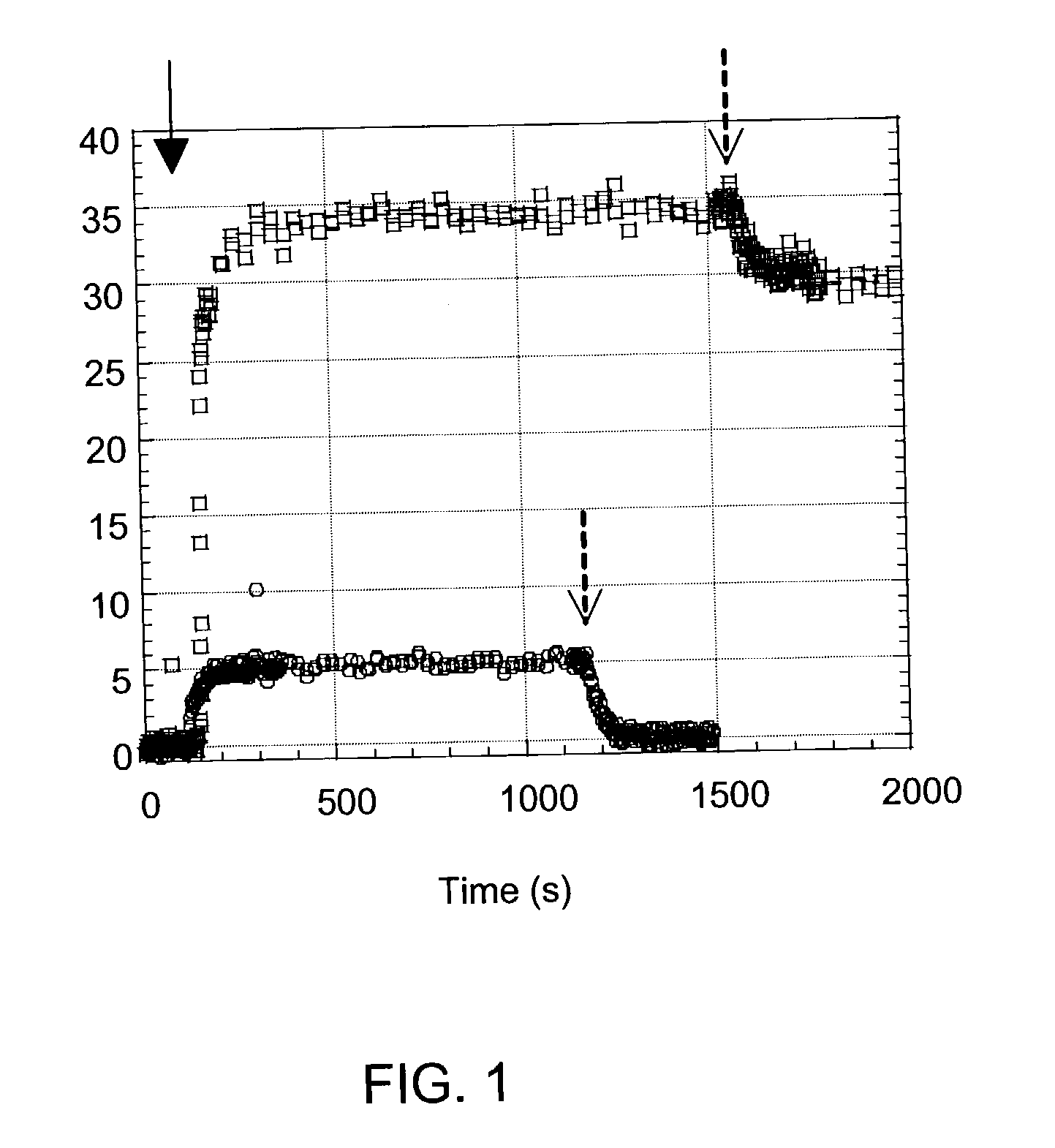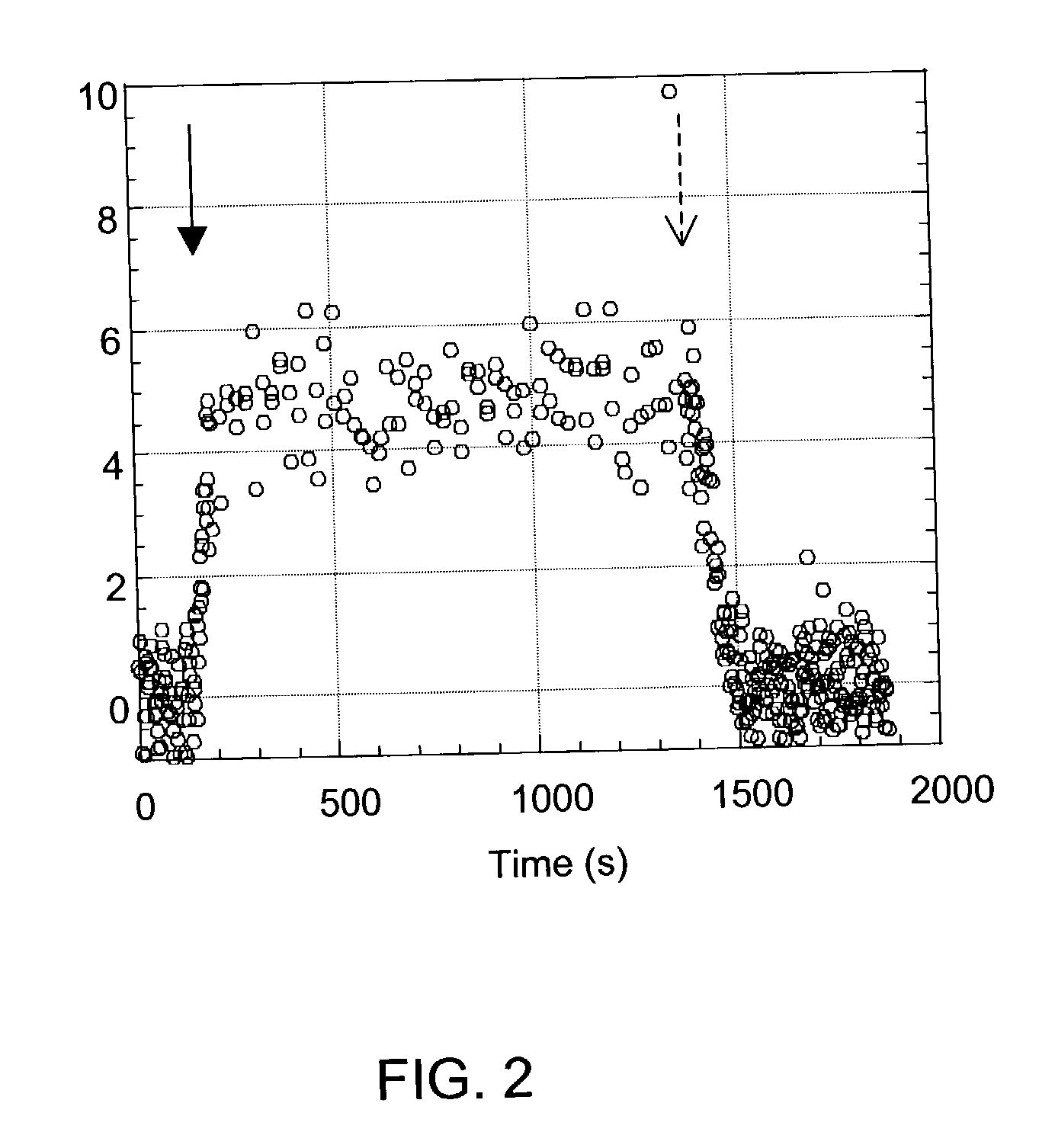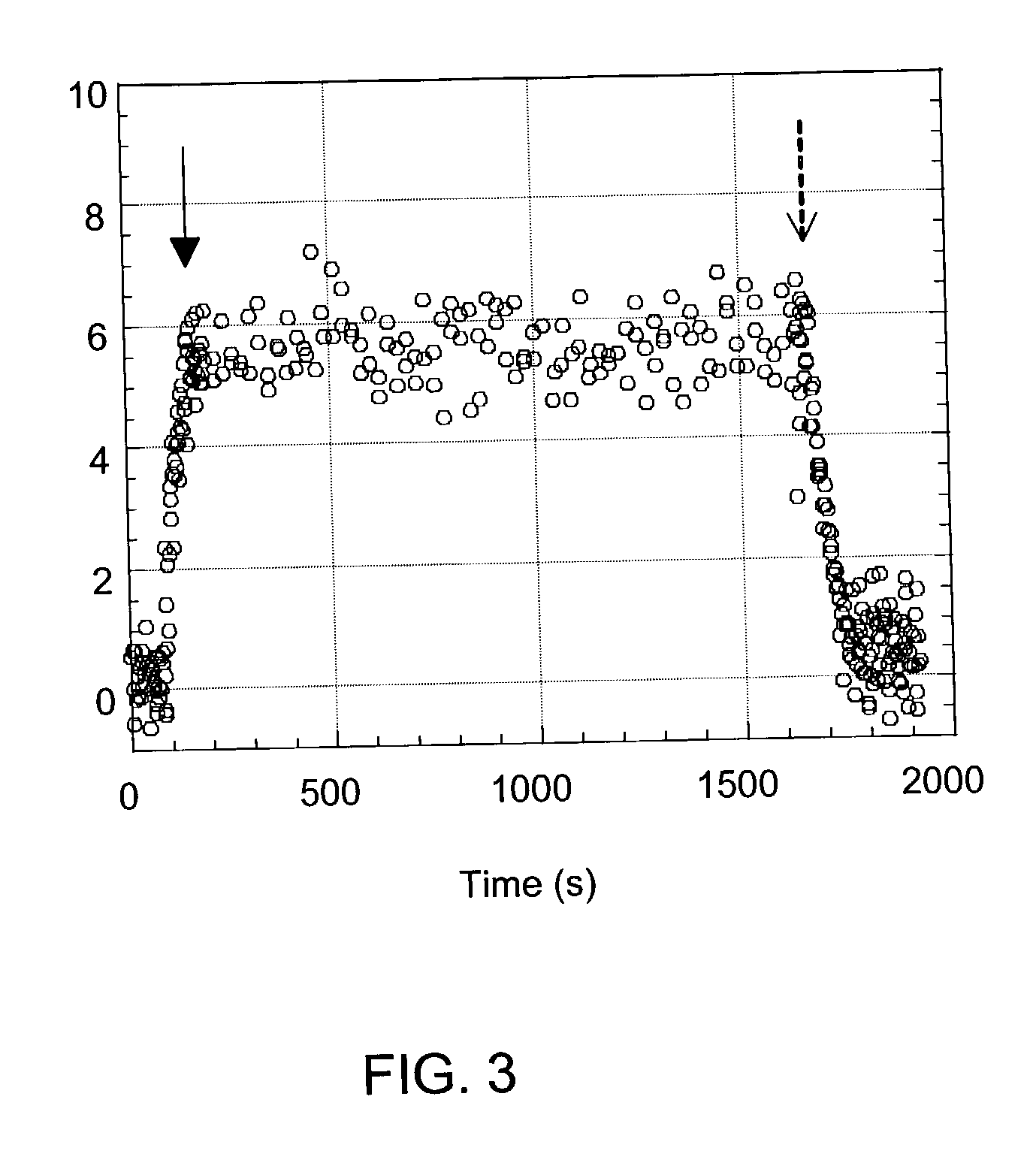Microfluidic devices with new inner surfaces
a microfluidic device and inner surface technology, applied in the direction of lamination ancillary operations, lamination apparatuses, electrical apparatuses, etc., can solve the problems of moderate hydrophilicity and insufficient utilization, and achieve the effects of optimizing wettability and anti-fouling, low non-specific adsorption, and sufficient wettability
- Summary
- Abstract
- Description
- Claims
- Application Information
AI Technical Summary
Benefits of technology
Problems solved by technology
Method used
Image
Examples
example 1
Plasma Treatment with Diethylene Glycol Dimethyl Ether
[0077]A polycarbonate CD disc (Macrolon DP-1265, Bayer AG, Germany), and pieces cut from a polycarbonate CD disc were placed in a plasma reactor (CVD Piccolo, Plasma Electronic, Germany), and subjected to argon plasma treatment at 24 W for 2 min. Subsequently, the polycarbonate surfaces were treated with plasma of diethylene glycol dimethyl ether (diglyme; Aldrich, USA) at 24 W for 5 min. The water contact angle (sessile drop) of the resulting surfaces was measured on a Ramé-Hart manual goniometer bench. The average of six equilibrium measurements (three droplets) was 48°.
example 2
Plasma Treatment with Diethylene Glycol Dimethyl Ether and Allylic Alchohol
[0078]A polycarbonate CD disc (Macrolon DP-1265, Bayer AG, Germany), and pieces cut from a polycarbonate CD disc were placed in a plasma reactor (CVD Piccolo, Plasma Electronic, Germany), and subjected to argon plasma treatment at 24 w for 2 min. Subsequently, the polycarbonate surfaces were treated with plasma of diethylene glycol dimethyl ether (diglyme; Aldrich, USA) at 24 W for 5 min. Finally, they were subjected to plasma of allylic alcohol (Merck, Germany) at 12 W for 5 min. The water contact angle (sessile drop) of the resulting surfaces was measured on a Ramé-Hart manual goniometer bench. The average of six equilibrium measurements (three droplets) was <10°.
example 3
Plasma Treatment with Ethylene Glycol Vinyl Ether
[0079]A polycarbonate CD disc (Macrolon DP-1265, Bayer AG, Germany), and pieces cut from a polycarbonate CD disc were placed in a plasma reactor (CVD Piccolo, Plasma Electronic, Germany), and subjected to argon plasma treatment at 24 w for 2 min. Subsequently, the polycarbonate surfaces were treated with plasma of ethylene glycol vinyl ether (Aldrich, USA) at 12 W for 5 min.
[0080]The water contact angle (sessile drop) of the resulting surfaces was measured on a Ramé-Hart manual goniometer bench. The average of six equilibrium measurements (three droplets) was 22°.
PUM
| Property | Measurement | Unit |
|---|---|---|
| water contact angle | aaaaa | aaaaa |
| water contact angle | aaaaa | aaaaa |
| pressure | aaaaa | aaaaa |
Abstract
Description
Claims
Application Information
 Login to View More
Login to View More - R&D
- Intellectual Property
- Life Sciences
- Materials
- Tech Scout
- Unparalleled Data Quality
- Higher Quality Content
- 60% Fewer Hallucinations
Browse by: Latest US Patents, China's latest patents, Technical Efficacy Thesaurus, Application Domain, Technology Topic, Popular Technical Reports.
© 2025 PatSnap. All rights reserved.Legal|Privacy policy|Modern Slavery Act Transparency Statement|Sitemap|About US| Contact US: help@patsnap.com



